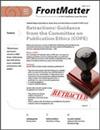Structural vibration reduction achieved by lightweight porous layers through the near-field damping effect: A technical summary
IF 0.3
4区 工程技术
Q4 ACOUSTICS
引用次数: 0
Abstract
Properly designed porous materials can provide damping equivalent to conventional viscoelastic dampers by the dissipation of the evanescent wave energy in the vibrating structure's acoustical near-field. At the same time, these materials possess advantages such as light weight and effective sound absorption. Thus, there are potential benefits with respect to cost and weight saving in automotive and aerospace applications by using porous layers as multi-functional noise and vibration control solutions. The intention in this article is to provide a concise summary of the methods and major findings previously presented in an extensive set of publications and conference presentations. In that work, porous media, such as fibers and foams, were designed to serve as treatments for various vibrating structures to examine their damping effectiveness. Both analytical modeling and numerical simulation based on finite element methods were involved depending on the complexity of the structure. Specifically, a Fourier transform-based computational method was introduced as the key step to allow accurate prediction of a panel's spatial response. The analytical model was further developed into an efficient software toolbox, so that parametric studies could be conducted to identify the optimal properties for a porous layer to provide the maximum damping within a target frequency region, based on which near-field damping design concepts are summarized. Key findings include the observation that the addition of bulk elasticity to the solid phase of the porous medium improves damping performance compared to equivalent limp treatments.轻质多孔层通过近场阻尼效应实现结构减震:技术摘要
设计合理的多孔材料可以通过消散振动结构声学近场中的蒸发波能量,提供与传统粘弹性阻尼器相当的阻尼效果。同时,这些材料还具有重量轻、吸音效果好等优点。因此,在汽车和航空航天应用中,使用多孔层作为多功能噪声和振动控制解决方案,在节约成本和减轻重量方面具有潜在优势。本文旨在简要总结之前在大量出版物和会议发言中介绍的方法和主要研究成果。在这项工作中,多孔介质(如纤维和泡沫)被设计用于各种振动结构的处理,以检查其阻尼效果。根据结构的复杂程度,分析建模和基于有限元方法的数值模拟均有涉及。具体来说,引入基于傅立叶变换的计算方法是准确预测面板空间响应的关键步骤。该分析模型被进一步开发成一个高效的软件工具箱,以便进行参数研究,确定多孔层的最佳属性,从而在目标频率区域内提供最大阻尼,并在此基础上总结了近场阻尼设计概念。主要研究结果包括观察到多孔介质固相中增加的体弹性与等效的跛行处理相比可改善阻尼性能。
本文章由计算机程序翻译,如有差异,请以英文原文为准。
求助全文
约1分钟内获得全文
求助全文
来源期刊

Noise Control Engineering Journal
工程技术-工程:综合
CiteScore
0.90
自引率
25.00%
发文量
37
审稿时长
3 months
期刊介绍:
NCEJ is the pre-eminent academic journal of noise control. It is the International Journal of the Institute of Noise Control Engineering of the USA. It is also produced with the participation and assistance of the Korean Society of Noise and Vibration Engineering (KSNVE).
NCEJ reaches noise control professionals around the world, covering over 50 national noise control societies and institutes.
INCE encourages you to submit your next paper to NCEJ. Choosing NCEJ:
Provides the opportunity to reach a global audience of NCE professionals, academics, and students;
Enhances the prestige of your work;
Validates your work by formal peer review.
 求助内容:
求助内容: 应助结果提醒方式:
应助结果提醒方式:


